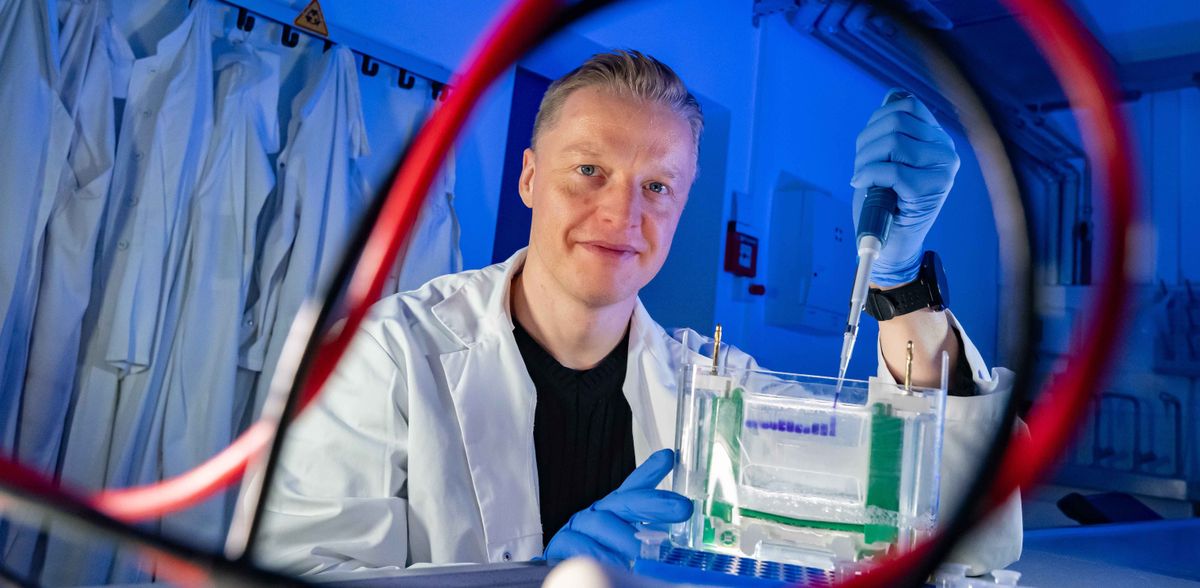Special RNA suppresses the formation of breast cancer cells
International research team deciphers molecular mechanism in the synthesis of ribosomal RNA
Advertisement
breast cancer is the most common cancer in women. The development of breast cancer often originates from epithelial cells in the mammary gland – the very cells that specialise in milk production during and after pregnancy. A team of researchers from Friedrich Schiller University Jena (Germany), the university in Shenzhen (China) and Jena University Hospital (Germany) has taken a closer look at this specialisation process and deciphered a molecular mechanism that also appears to play an important role in cancer development. It may be possible to develop new diagnostic procedures and treatment methods for breast cancer based on these research findings. The scientists report on their work in the scientific journal “Cell Reports”.
Switching RNA synthesis on and off
Cell differentiation, i. e., their specialisation, is an essential component of an organism – only through this specialisation can cells take on different tasks. During lactogenesis – the process triggered by hormones that enables the mammary glands to produce milk – the relevant cells multiply first. The proteins required for this are produced by the ribosomes. A fundamental building block of ribosomes is ribosomal RNA, or rRNA for short. If more proteins are required, the demand for rRNA also increases, and its synthesis in the cell nucleus is ramped up accordingly. At the end of lactogenesis, the specialised cells stop growing and reduce rRNA synthesis again. This regulatory mechanism takes place at the epigenetic level, which means that it is not the DNA itself that changes, but its packaging, for which another type of RNA is responsible.
“We’ve found out that a long, non-coding RNA called PAPAS, which I had discovered a few years ago, acts on the packaging of the DNA and reduces rRNA production,” explains Dr Holger Bierhoff, who is leading the project at the University of Jena. “More precisely, PAPAS influences access to the active regions of the DNA and determines whether these are copied into RNA or not. If a lot of ribosomes and proteins, and thus a lot of rRNA are needed, the synthesis of PAPAS is reduced. If this process is to be stopped, the PAPAS level is increased.”
The experts in Jena also discovered that PAPAS not only plays an important role in cell proliferation, but also in specialisation. “When we switched off PAPAS through gene manipulation in cells, we observed that the development into milk-producing cells no longer functioned properly,” says Bierhoff.
High PAPAS level – low tumour growth
Synthesis of rRNA is also increased in cancer cells, as they multiply rapidly and require a lot of proteins – and accordingly a lot of ribosomes. “We therefore asked ourselves whether the regulatory mechanism we observed also plays a role in the development of breast cancer. The answer is clearly yes,” explains cell biologist Bierhoff. “When we reduced PAPAS synthesis and switched off cell specialisation, we observed that the cells developed the characteristics of cancer cells.” In contrast, the researchers showed both in cell cultures and in mice that a high PAPAS level reduces tumour growth as well as the spread of metastases.
But how do cancer cells manage to switch off PAPAS production and thus boost rRNA synthesis? “We have also found a mechanism for this,” explains Bierhoff. “Production of PAPAS requires a molecular signal at the start of the PAPAS gene. This signalling structure is regulated by particular proteins, which can resolve or block the structure. We’ve observed that the production of these proteins is particularly high in breast cancer cells. The more aggressive the tumour, the more of them are present.”
Jena researchers are developing RNA therapy
For Holger Bierhoff, the research results are promising in two respects: “Firstly, we see that PAPAS can be an interesting marker for assessing the aggressiveness of a breast tumour. This information could potentially be used as a diagnostic tool,” he says. “Secondly, we’re already working on developing an RNA therapy for cancer treatment. We know the mechanism by which PAPAS regulates rRNA synthesis and we know which region of the RNA is required for this. Now, the idea is to produce this part of PAPAS artificially, package it in nanoparticles, and introduce it into the cancer cells, thereby restoring its function. In this way, we would reduce rRNA synthesis, which the cancer needs to proliferate.” This strategy would be similar to mRNA vaccines, like the one against Covid-19, however, here a regulatory RNA instead of protein-coding RNA would be applied.
























































